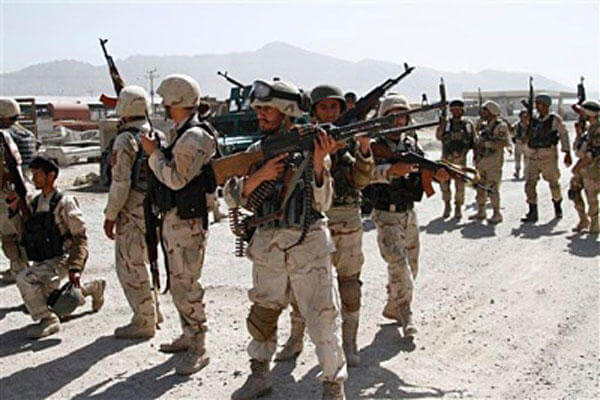President Barack Obama has lifted the ban on U.S. airstrikes against the Taliban in support of the Afghan National Security Forces, Defense Secretary Ashton Carter said Friday.
U.S. airstrikes against the Taliban had previously been limited to "self-defense" strikes when U.S. troops came under attack, but Carter said that Army Gen. John Nicholson, commander of U.S. Forces-Afghanistan, would now have the authority to order "pro-active" close air support strikes for Afghan forces in the field.
"The president made a decision to enable the commander there to have some additional authority to act pro-actively -- that is to anticipate the situation in which the Afghan security forces would benefit from our support," Carter said in response to questions at the Defense One Tech Summit in Washington, D.C.
"This makes good sense," he said of the change to the rules of engagement. "Obviously, our mission is the same" to support the Afghans in a non-combat role, but "this will enable our commander there to do this in a more effective way."
The secretary said Obama made the change after discussions with himself and Joint Chiefs Chairman Marine Gen. Joseph Dunford. "This was pursuant to Gen. Dunford's and my discussions with him [Obama]," Carter said. "It's a good move."
The decision was one the Afghans have been pressing for since they took the lead role in the fight against the Taliban in early 2015 after most international troops were withdrawn.
"Our army is capable of fighting, the only thing we need is air support," Afghan defense ministry spokesman Dawlat Waziri told The Associated Press. "We welcome this decision from America and it will boost the morale of the Afghan army."
U.S. airstrikes have been strictly limited since the troop withdrawals of 2014, when the U.S. and NATO formally ended their combat role, but there were exceptions for "counter-terror" strikes against al-Qaida and "self-defense" strikes in support of U.S. trainers and advisers who came under attack.
Earlier this year, Obama authorized airstrikes against the Afghan affiliate of the Islamic State of Iraq and Syria in southeastern Afghanistan. At the same time, the U.S. has been building up the Afghans' ability to provide their own close air support by supplying them this year with A-29 Super Tucano ground attack aircraft. Currently, there are eight A-29s in Afghanistan.
The decision to expand the airstrikes came as Obama neared a decision on whether to continue with U.S. troop withdrawals from Afghanistan this year. Currently, there are about 9,800 U.S. troops in Afghanistan, and the original plan was to draw that number down to 5,500 by the end of December.
However, Obama said he would await the recommendations of Nicholson, who took over from Army Gen. John Campbell earlier this year.
Army Brig Gen. Charles Cleveland, the main spokesman for U.S. Forces-Afghanistan, said in a briefing to the Pentagon last week that Nicholson had completed his report and it was being sent up the chain of command for action.
-- Richard Sisk can be reached at Richard.Sisk@Military.com.





























